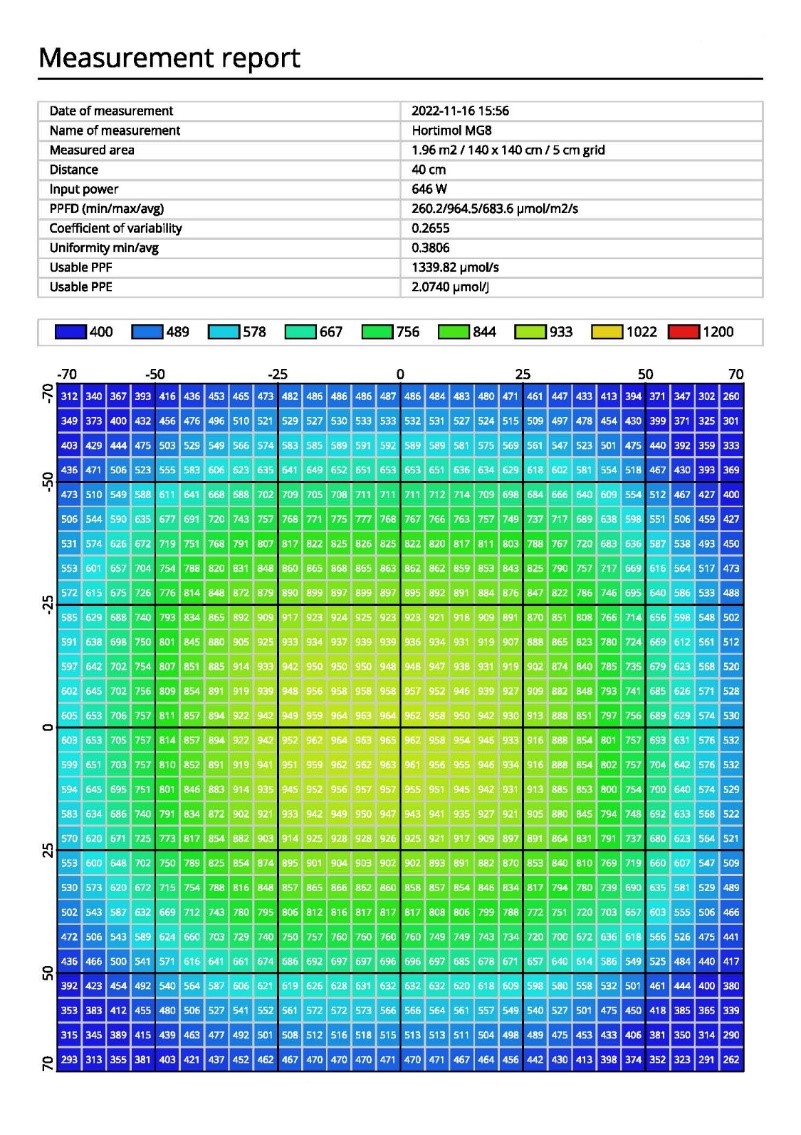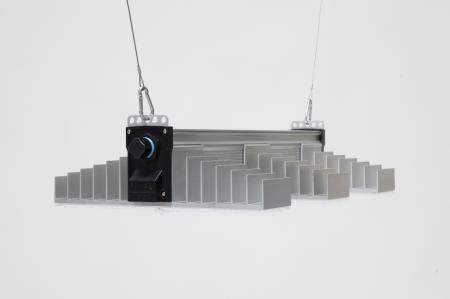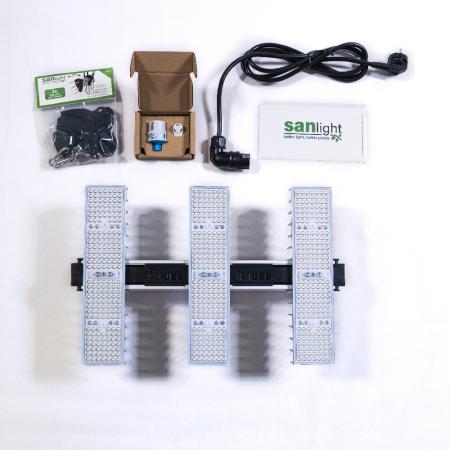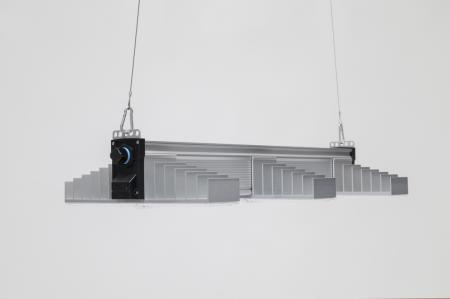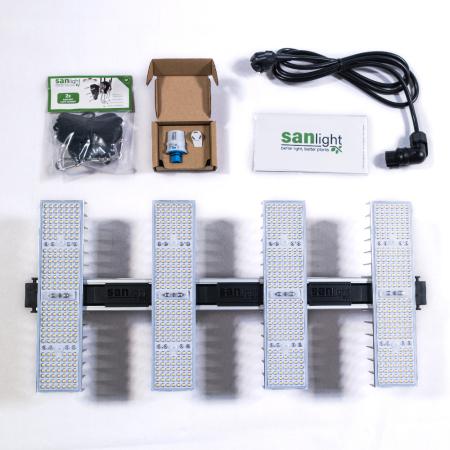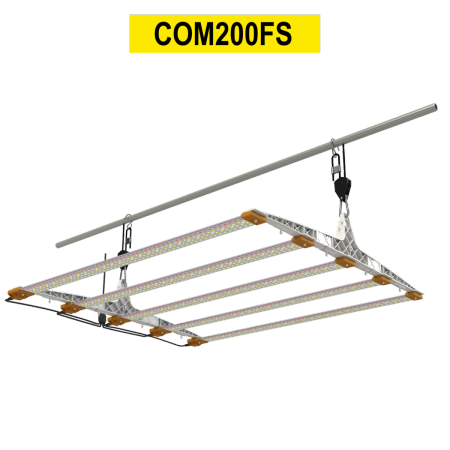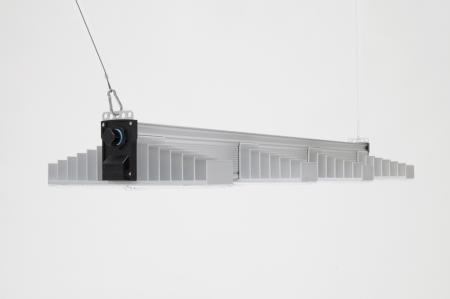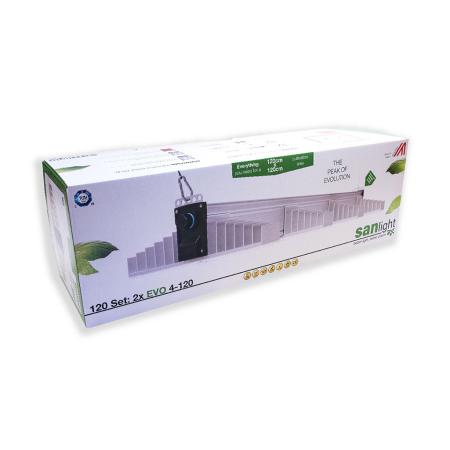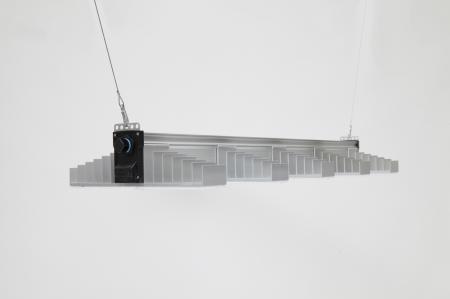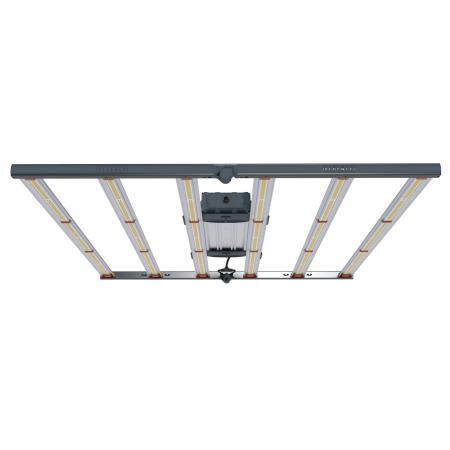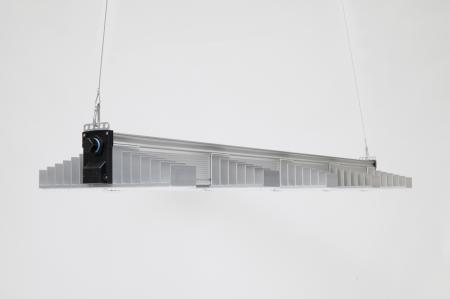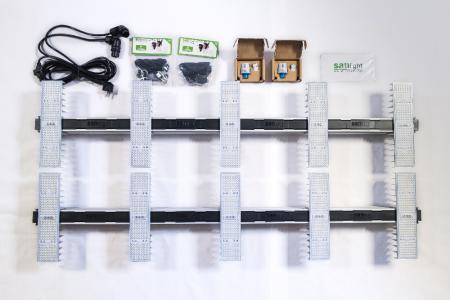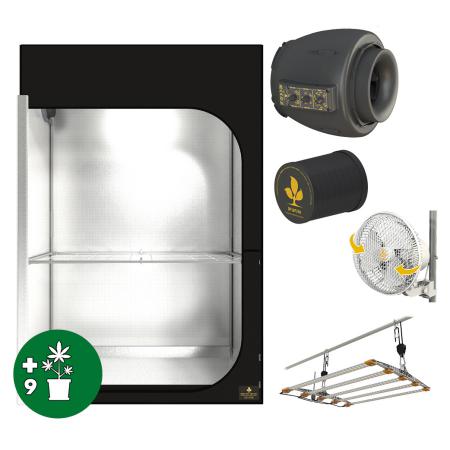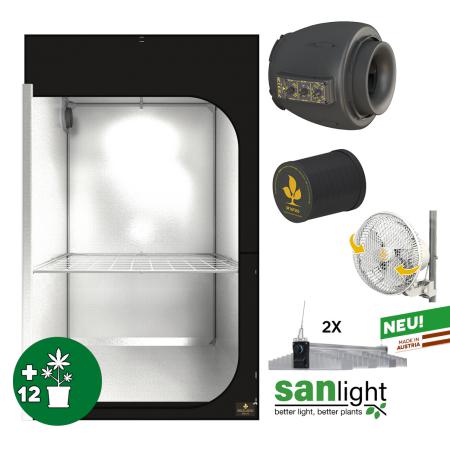Plant light - Lighting technology
Plant light is crucial for plants to thrive in the greenhouse or grow box. Optimal light for plants promotes growth and harvest. Choose the right lighting to ensure healthy plant growth.
Experienced growers now swear by the use of plant light LEDs. The reasons for this are convincing, above all the unrivalled efficiency of light-emitting diodes compared to other technologies. There is currently no technology available that converts electrical energy into light more efficiently.
To make the whole thing clearer, here is a direct comparison: conventional light bulbs only have a luminous efficacy of 2 %. This means that only 2 % of the energy supplied is utilised in the form of light. More advanced sodium vapour lamps perform better here and can convert as much as 30 % of the energy used into light. State-of-the-art plant lighting LEDs have an impressive light yield of 85 %. The cost-benefit ratio is currently unbeatable. There is simply no more efficient lighting option for plant growth than LEDs.
High-performance LEDs have now been developed which, with a light temperature of 4000°K, almost correspond to sunlight. The efficiency is around 180 lumens per watt. The emitted light spectrum ranges from ultraviolet through all colours to the infrared range. Plants react positively to this sun-like light, which leads to a more than two-fold increase in yield.
At the same time, electricity costs can be reduced by up to 60 %.
The user-friendliness of LED lighting is particularly worth mentioning. The lights available from us are plug-and-play. This means: you unpack them, plug them in and switch them on - and you're done.
Compared to the occasionally more complicated sodium vapour lamps, this is undoubtedly a big step forward. You don't have to assemble anything, carry out any electrical installations and you don't need any additional devices such as ballasts or reflectors.
What plant light LEDs are and how they work
LEDs (Light Emitting Diodes) are available in various designs, although their basic design is always the same. The diode contains a semiconductor that emits light when an electric current flows through it. Plastic or glass lenses are usually fitted over this semiconductor, and occasionally reflectors are used for the LED chips.
The most striking features of these small light-emitting diodes compared to older lighting sources are undoubtedly their light spectrum and their beam angle. Depending on the semiconductor used, the LED produces different colours. This means that the light spectrum of a single chip is quite limited compared to a sodium vapour lamp, for example. Nevertheless, the targeted combination of different light-emitting diodes makes it possible to generate a broad or even specific colour spectrum that meets the requirements of your plants. This means that plant lighting LEDs can either be used universally or fulfil the exact needs of your plants.
The first question to ask yourself is:
Which lighting for which growing area?
60 X 60 cm
90 X 90 cm
120 X 120 cm
150 X 150 cm
Grow Boxes
We also offer grow boxes, ready to use with LED lighting.
What plant light is needed during the growth phase?
To ensure healthy development during the vegetative phase, it is crucial that your plants receive light in the blue color spectrum. The optimum spectrum generally ranges from around 4000 to 8000 Kelvin, with bulbs of around 5000 to 7000 Kelvin being particularly effective.
Which lighting is suitable for the flowering phase?
To ensure that your indoor plants produce strong flowers with aromatic terpenes, they need light in the red color spectrum. Wavelengths of 2500 to 3500 Kelvin are ideal for this. Current research results show that the additional use of infrared light (approx. 730 nm) is beneficial for plant growth. For this reason, infrared LEDs are increasingly being integrated into full-spectrum LED lamps.
What are full spectrum LEDs?
Modern LED technology makes it possible to integrate the entire light spectrum that your plants need from germination to flowering. The use of LEDs with different wavelengths ensures a balanced color spectrum. For LED grow lights, the color spectrum is usually specified in nanometers (nm) instead of Kelvin. Full spectrum LEDs usually have a range of approximately 400 to 780 nm, including the Far Red range. Some models such as the Hortimol MHX4 and Hortimol MG8 even offer additional UV-A light in the FSMUV version.
Which lamps are suitable for growing?
High-quality LED lamps are now available specifically for growing young plants and cuttings. They generate very little heat and avoid hotspots, which protects the sensitive young plants and promotes successful root formation. Solutions such as the Cosmorrow LEDs from Secret Jardin are ideal here and have practical dual power supply units that can be used to supply two LED light strips directly.
Technical details for LEDs
The power
The power of an electrical device is expressed in watts and gives you a rough indication of what you can expect from the light source. It can be used as an initial filter criterion, but is less suitable for a detailed assessment of a lighting device or a direct comparison of different systems.
Lumen
The lumen is the luminous flux of a source, but only in the range of the spectrum visible to the human eye. This range only partially covers the color spectrum that your plants need for efficient photosynthesis. In addition, the lumen measurement takes into account the different sensitivity of the human eye to different colors. Green light, for example, is perceived more intensely than blue or red light. As you already know, photosynthesis works the other way around - blue and red light are much more important for your plants. This means that the luminous flux specified in lumens is unsuitable for the application of growing LEDs. Just like the wattage, it can only be used as a rough guide.
The PAR value
The PAR value is a better indicator and shows how much energy a light source emits in the color spectrum relevant for photosynthesis. It therefore addresses the problem that exists with lumen measurements. Nevertheless, it should be noted that energy is not the decisive factor for photosynthesis, as this process is based on quantum mechanical principles. However, the PAR value is a step in the right direction and can help to assess LEDs more accurately. In this context, the PPFD value is generally even more precise.
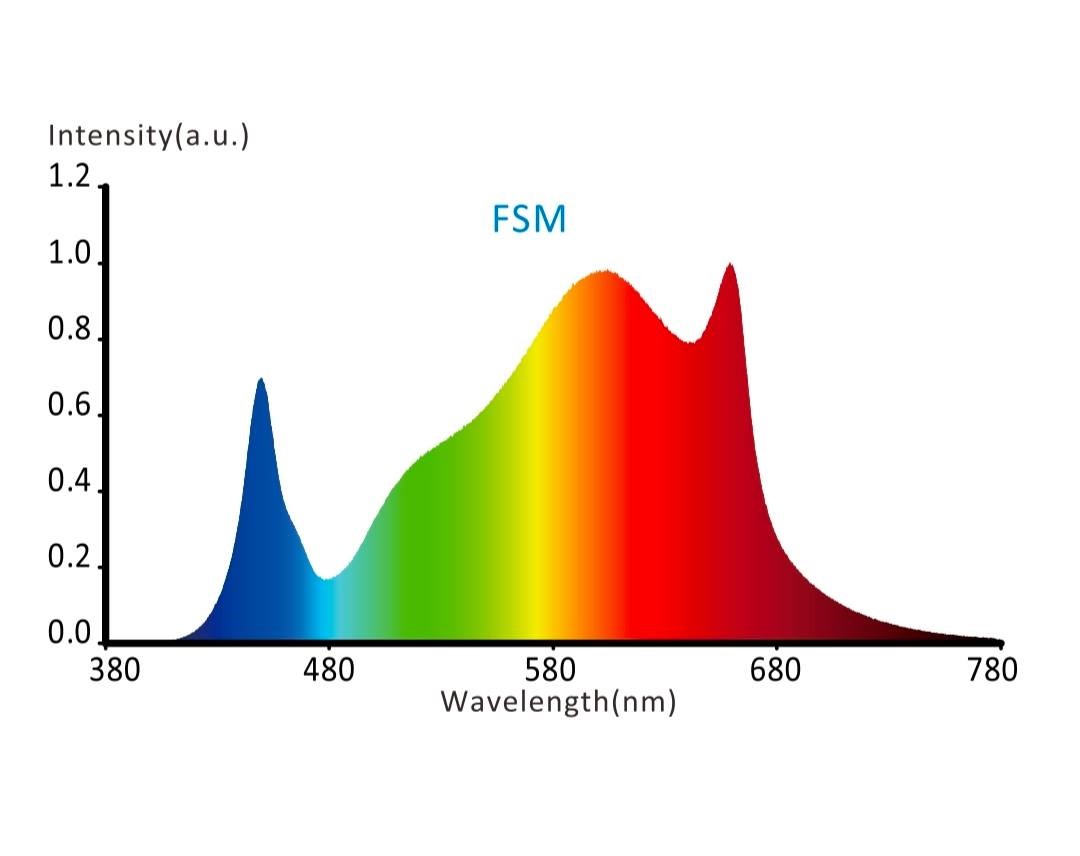
Efficiency
Efficiency describes the ratio of output power (light output) to input power (power consumption). In other words, this figure shows how much light is generated per joule (watt per second) consumed. Light can be considered both as a wave (radiometric) and as a light particle "photon". If light is viewed as a wave, the light emitted by a lamp can be measured in watts. In the case of photonic observation, this is referred to as micromoles. In the field of plant lighting, the entire spectral range is not measured, but mainly the wavelengths between 400 and 700 nm, the so-called PAR range. However, the consideration of other wavelengths, such as UV and far red, is becoming increasingly important and has led to an extended observation range of 380 to 780 nm. Different values can be specified for the efficiency of a luminaire. Module efficiency or system efficiency can be considered.
Module efficiency = efficiency of the light source
The information on the efficiency of sodium vapor light sources refers to the light source itself. In this context, the term module efficiency or efficiency of the light source is used. Losses caused by the driver or ballast as well as reflectors, covers or lenses are not included in these figures. A conventional sodium vapor light source has an efficiency of 1.7 µmol/J. This means that with an input power of 600 watts, the light source generates a light output of 600 watts x 1.7 µmol/J = 1020 µmol/s.
System efficiency = efficiency of the entire system
As the name suggests, system efficiency refers to the value of the entire lighting system, which includes all components of the luminaire. This can be illustrated using three examples.
Example: Sodium vapor lamp 600W
Efficiency of the light source: 1.7µmol/J
Efficiency of the ballast: 94%
To supply the sodium vapor light source with 600W, the ballast consumes a higher power. In our case, the power consumption of the ballast is 638W and 600W is supplied to the light source.
The remaining 38W is dissipated as heat.
Reflector efficiency: 85%
As sodium vapor lamps emit light at a 360° angle, they require a reflector.
Even the best reflectors do not work without losses and some of the light is not directed to the plants but is lost.
With the above information, we can now calculate the system efficiency of a sodium vapor luminaire:
Module efficiency x ballast efficiency / 100 x reflector efficiency/100 = system efficiency
1,7µmol/J x 94/100 x 85/100 = 1,358µmol/J
With a power consumption of 638W, a sodium vapor lamp generates 638W x 1.358µmol/J = 866µmol/s output.
PPFD
This value indicates how many photons in the light spectrum relevant for photosynthesis are emitted by a light source in relation to a defined area, usually 1 m². The unit of the PPFD value is µmol/(s*m²) and basically gives you a good idea of the illuminance of your new plant lamp. Special diagrams are often used to visualize this value, which also show the distribution of the light. However, it should be noted that the PPFD value and the corresponding diagrams should never be viewed in isolation. It is crucial to always consider the accompanying circumstances. For example: At what height was the lamp measured? What was the beam angle? You can therefore never use the PPFD value alone to compare two systems.
